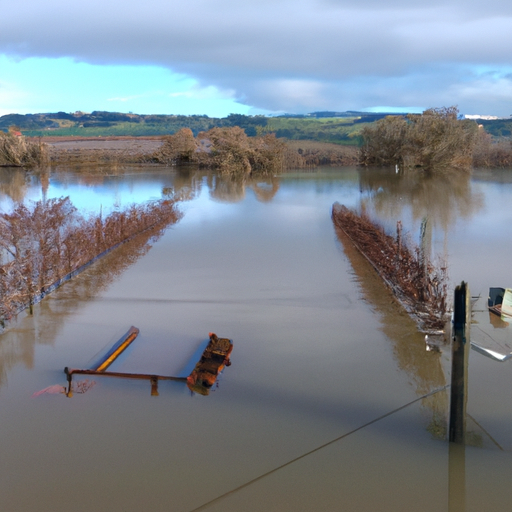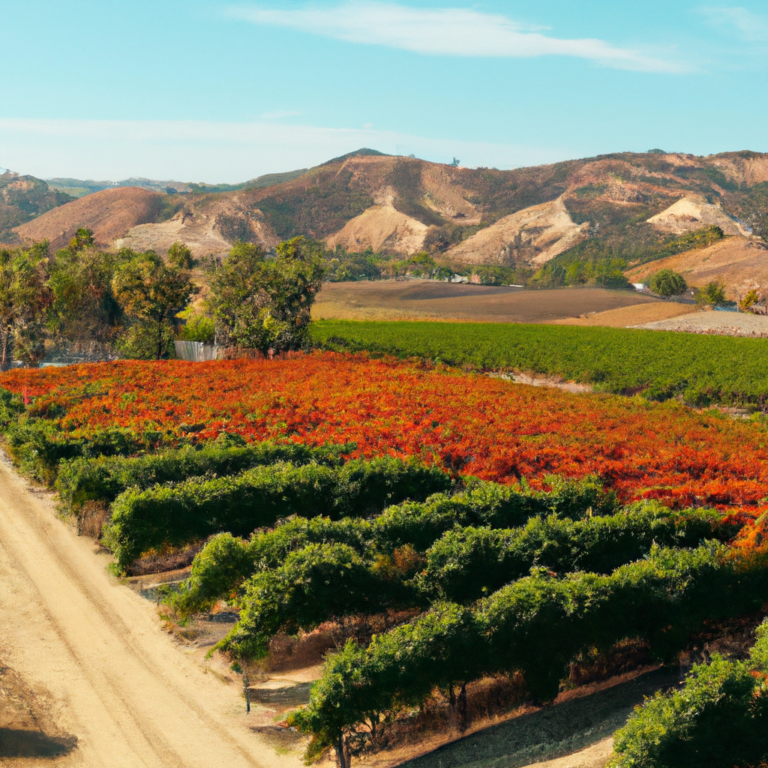The Impact of Winter Floods on Sonoma County Vineyards
The Effects of Winter Floods on Sonoma County Vineyards
The Effects of Winter Floods on Sonoma County Vineyards
Winter floods can have a significant impact on Sonoma County vineyards, affecting both the quality and quantity of the grapes produced. These floods, caused by heavy rainfall and overflowing rivers, can lead to soil erosion, vineyard damage, and increased disease pressure. Understanding the effects of winter floods on vineyards is crucial for vineyard owners and winemakers in Sonoma County.
One of the primary consequences of winter floods is soil erosion. When heavy rains occur, the water can wash away the top layer of soil, which is essential for vine growth. This erosion can lead to nutrient depletion and a decrease in soil fertility. As a result, the vines may struggle to obtain the necessary nutrients, leading to stunted growth and reduced grape quality.
In addition to soil erosion, winter floods can cause physical damage to the vineyards. The force of the water can uproot vines, damage trellises, and destroy irrigation systems. This damage not only affects the current season’s crop but can also have long-term effects on the vineyard’s productivity. It may take several years for the vineyard to fully recover from the flood damage, resulting in decreased grape yields and potential financial losses for vineyard owners.
Furthermore, winter floods can create ideal conditions for the spread of diseases in vineyards. The excess moisture from the floods can promote the growth of fungal pathogens, such as powdery mildew and botrytis. These diseases can severely impact grape quality and yield. Additionally, the increased humidity in the vineyard can create an environment conducive to the proliferation of pests, further compromising the health of the vines.
To mitigate the effects of winter floods on Sonoma County vineyards, vineyard owners and winemakers employ various strategies. One common approach is the implementation of erosion control measures, such as planting cover crops and installing erosion control barriers. These measures help to stabilize the soil and prevent erosion, ensuring that the vines have access to the necessary nutrients for optimal growth.
Additionally, vineyard owners may invest in flood-resistant trellis systems and irrigation infrastructure. These systems are designed to withstand the force of floodwaters and minimize damage to the vineyard. By investing in flood-resistant infrastructure, vineyard owners can reduce the risk of physical damage to their vineyards and minimize the financial impact of winter floods.
Furthermore, vineyard management practices play a crucial role in mitigating disease pressure in flood-affected vineyards. Regular monitoring and early detection of fungal diseases allow for timely intervention, such as the application of fungicides. Additionally, proper canopy management techniques, such as leaf removal and cluster thinning, can help improve air circulation and reduce humidity, creating an unfavorable environment for disease development.
In conclusion, winter floods can have a significant impact on Sonoma County vineyards. Soil erosion, physical damage, and increased disease pressure are among the primary effects of these floods. However, through the implementation of erosion control measures, investment in flood-resistant infrastructure, and effective vineyard management practices, vineyard owners and winemakers can mitigate the negative consequences of winter floods. By understanding and addressing the effects of winter floods, Sonoma County vineyards can continue to produce high-quality grapes and maintain their reputation as a premier wine region.
Mitigation Strategies for Winter Floods in Sonoma County Vineyards

Winter floods can have a significant impact on Sonoma County vineyards, causing damage to crops, infrastructure, and the overall health of the vineyards. As a result, it is crucial for vineyard owners and managers to implement effective mitigation strategies to minimize the negative effects of these floods.
One of the most important mitigation strategies for winter floods in Sonoma County vineyards is proper land management. This includes implementing erosion control measures such as planting cover crops, constructing terraces, and installing sediment basins. These measures help to reduce soil erosion and prevent sediment from being washed into the vineyards during heavy rainfall events.
In addition to erosion control, vineyard owners can also implement floodplain management strategies. This involves identifying areas within the vineyard that are prone to flooding and taking steps to minimize the impact. For example, vineyard owners can create flood channels or diversion ditches to redirect floodwaters away from the vineyards. By doing so, they can protect the vines from being submerged in water for extended periods, which can lead to root damage and even death of the plants.
Another important mitigation strategy is the use of proper drainage systems. Sonoma County vineyards often have complex topography, with varying slopes and elevations. This can make it challenging for water to drain properly, leading to waterlogging and increased risk of flooding. By installing drainage systems such as French drains or subsurface drains, vineyard owners can ensure that excess water is efficiently removed from the vineyard, reducing the risk of flooding and water damage.
Furthermore, vineyard owners can also consider implementing flood-resistant farming practices. This includes selecting grape varieties that are more tolerant to waterlogged conditions and have a higher resistance to diseases that thrive in wet environments. Additionally, vineyard owners can adjust their pruning and trellising techniques to promote better airflow and reduce the risk of fungal diseases that are common in damp conditions.
It is also important for vineyard owners to have a comprehensive emergency response plan in place. This includes having a clear communication strategy to alert employees and stakeholders about potential flood events, as well as establishing protocols for evacuating personnel and protecting valuable equipment. By being prepared and having a well-defined plan, vineyard owners can minimize the potential damage caused by winter floods and ensure the safety of their employees.
Lastly, vineyard owners can also consider purchasing flood insurance to protect their investments. While mitigation strategies can help reduce the risk of flooding, it is impossible to completely eliminate it. By having flood insurance, vineyard owners can have peace of mind knowing that they are financially protected in the event of a flood.
In conclusion, winter floods can have a significant impact on Sonoma County vineyards, but with the implementation of effective mitigation strategies, vineyard owners can minimize the negative effects. Proper land management, floodplain management, drainage systems, flood-resistant farming practices, emergency response plans, and flood insurance are all important components of a comprehensive mitigation strategy. By taking these steps, vineyard owners can protect their crops, infrastructure, and overall health of their vineyards, ensuring the long-term sustainability of their operations.
Long-Term Implications of Winter Floods on Sonoma County Vineyards
Winter floods can have a significant impact on Sonoma County vineyards, with long-term implications for the region’s wine industry. These floods, caused by heavy rainfall and overflowing rivers, can result in damage to vineyards, loss of crops, and changes in soil composition. Understanding the long-term implications of these floods is crucial for vineyard owners and winemakers in Sonoma County.
One of the most immediate and visible impacts of winter floods on vineyards is the physical damage caused to the vines and infrastructure. Floodwaters can erode the soil, wash away topsoil, and uproot vines. This can lead to the loss of entire vineyards and the need for costly replanting. In addition, floodwaters can damage irrigation systems, trellises, and other infrastructure, further adding to the financial burden on vineyard owners.
Beyond the immediate damage, winter floods can also have long-term implications for the health and productivity of vineyards. Floodwaters can introduce sediment, debris, and pollutants into the soil, affecting its composition and fertility. This can lead to changes in the nutrient levels and pH balance of the soil, which in turn can impact the growth and quality of the grapes. It may take several years for the soil to recover from the effects of flooding, during which time vineyard owners may experience reduced yields and lower-quality grapes.
Another long-term implication of winter floods on Sonoma County vineyards is the increased risk of disease and pests. Floodwaters can create stagnant pools of water, providing breeding grounds for mosquitoes and other insects. These insects can transmit diseases to the vines, such as grapevine leafroll-associated viruses, which can significantly reduce grape quality and yield. In addition, the excess moisture from floods can create favorable conditions for fungal diseases, such as powdery mildew and botrytis, which can further impact grape production.
Furthermore, winter floods can also disrupt the delicate balance of the vineyard ecosystem. Floodwaters can wash away beneficial insects and microorganisms that play a crucial role in maintaining soil health and preventing the spread of pests and diseases. This disruption can have cascading effects on the overall health and sustainability of the vineyard, requiring vineyard owners to invest in additional measures to restore the balance and protect their crops.
In response to the long-term implications of winter floods, vineyard owners and winemakers in Sonoma County have implemented various strategies to mitigate the risks. These strategies include improving drainage systems, implementing erosion control measures, and adopting sustainable farming practices. By investing in these measures, vineyard owners can minimize the impact of floods on their crops and ensure the long-term viability of their vineyards.
In conclusion, winter floods can have significant long-term implications for Sonoma County vineyards. From physical damage to changes in soil composition, increased risk of disease and pests, and disruption of the vineyard ecosystem, the effects of floods can be far-reaching. However, by understanding and implementing appropriate mitigation strategies, vineyard owners can minimize the impact of floods and protect the future of their vineyards.







